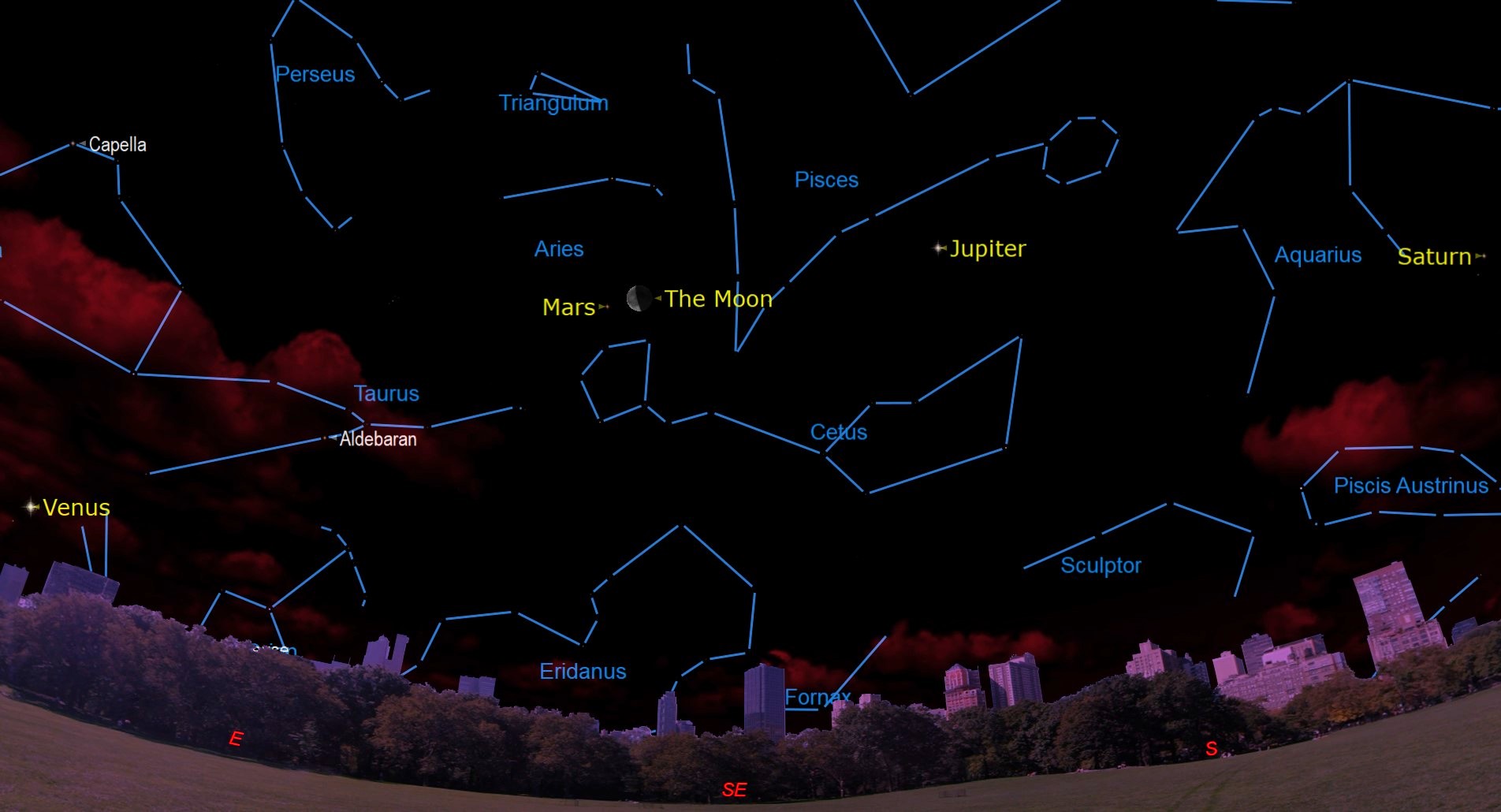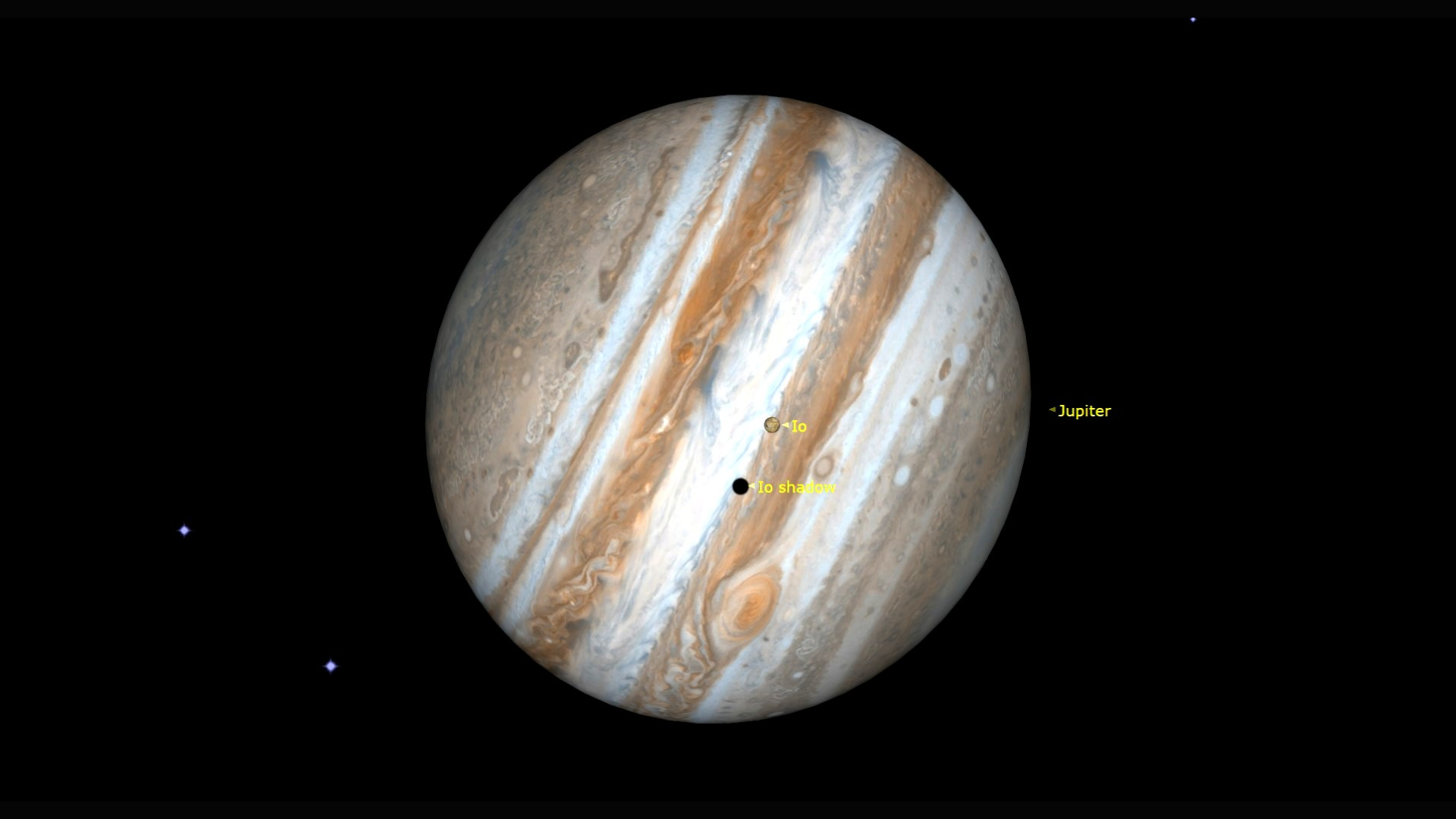Dim Pluto reaches its brightest as the third-quarter moon meets Mars in the night sky
Here's how to observe these solar system worlds overnight Wednesday (July 20) and Thursday (July 21).

Get your observing equipment ready for some world-hunting.
Dwarf planet Pluto will reach its opposition, or brightest appearance in the sky, late on Wednesday (July 20). Stay up until dawn, and you can watch the third-quarter moon approach Mars in the brightening sky Thursday (July 21).
Be forewarned that Pluto is an observing challenge, as it is only visible in the largest of backyard telescopes. Its maximum magnitude will be 14.3, compared with naked-eye stars that shine at -6.
Related: See the rare alignment of 5 planets and the moon in this stunning night sky photo
Still, we can at least point you to the area of sky Pluto currently occupies. According to astronomer Chris Vaughan of Astrogeo.ca, who prepares Space.com's monthly Night Sky calendar in cooperation with Simulation Curriculum, look for the medium-bright star Omega Sagittarii, which shines well to the left (east) of Sagittarius' teapot-shaped asterism.
Pluto is roughly three finger-widths (3.5 degrees) north of the star. Or you can seek out the bright globular star cluster Messier 75; Pluto is two degrees to the lower right.
Happily, the moon and Mars are much easier to spot and will be visible to the naked eye.
Breaking space news, the latest updates on rocket launches, skywatching events and more!
The moon will rise early in the morning on Thursday as a waning crescent, starting at 12:32 a.m. local time in New York City. (Consult Timeanddate.com to find the rise time for your locality.) Mars should rise a few minutes later.
Wait until the moon and Mars are well above the horizon, around 2 a.m. local time. Find the moon, then look several finger-widths (4 degrees) to the upper right to spot Mars. The two worlds will share a single binocular field.

Looking for a telescope for the next stargazing event? We recommend the Celestron Astro Fi 102 as the top pick in our best beginner's telescope guide.
You'll be able to follow them up at the sky through dawn, around 5 a.m. If you're clouded out, you'll be able to spot the two worlds again on Friday morning (July 22), although the moon will now be at the lower left of Mars.
In between, observers in eastern China, Japan and northeastern Russia can watch the moon go in front of (occult) Mars around 1500 GMT on Thursday, according to Vaughan.
Looking for a telescope or binoculars to observe Pluto, Mars or the moon? Our guides for the best binoculars deals and the best telescope deals now can help. Our best cameras for astrophotography and best lenses for astrophotography can also help you prepare to capture the next skywatching sight on your own.
Follow Elizabeth Howell on Twitter @howellspace. Follow us on Twitter @Spacedotcom and on Facebook.

Elizabeth Howell (she/her), Ph.D., was a staff writer in the spaceflight channel between 2022 and 2024 specializing in Canadian space news. She was contributing writer for Space.com for 10 years from 2012 to 2024. Elizabeth's reporting includes multiple exclusives with the White House, leading world coverage about a lost-and-found space tomato on the International Space Station, witnessing five human spaceflight launches on two continents, flying parabolic, working inside a spacesuit, and participating in a simulated Mars mission. Her latest book, "Why Am I Taller?" (ECW Press, 2022) is co-written with astronaut Dave Williams.

